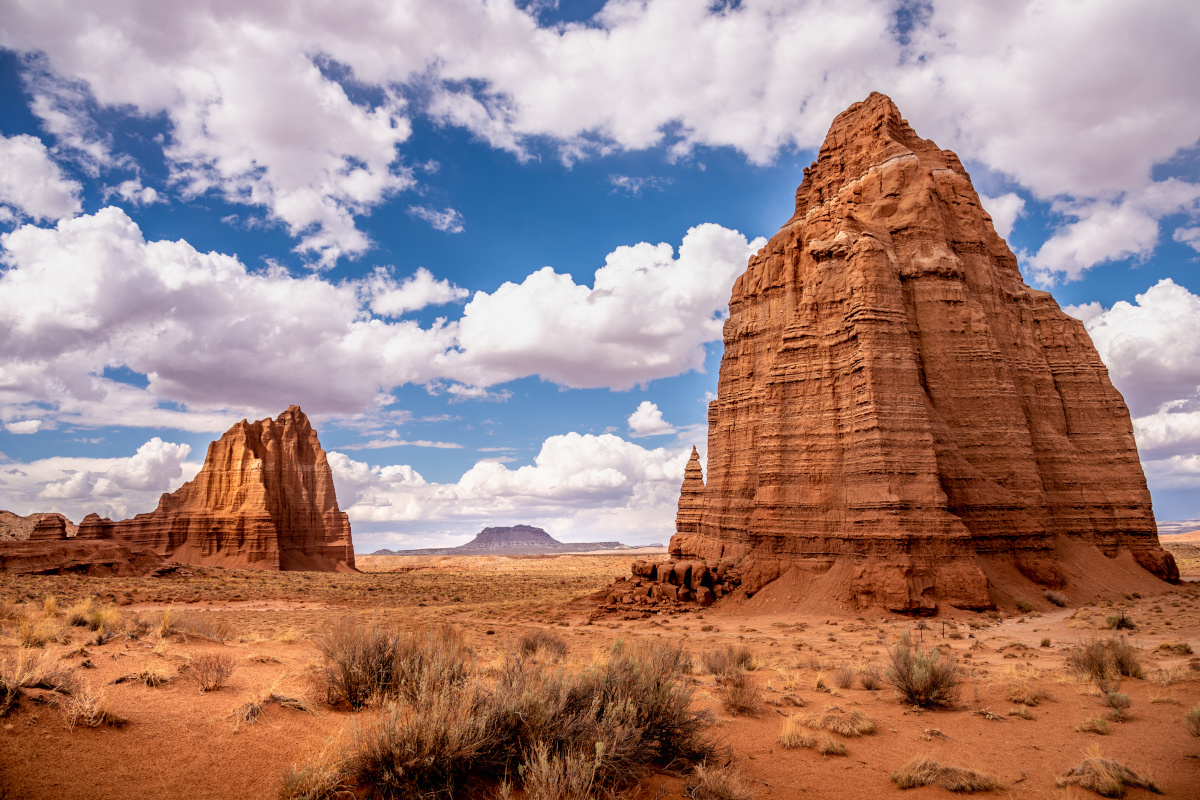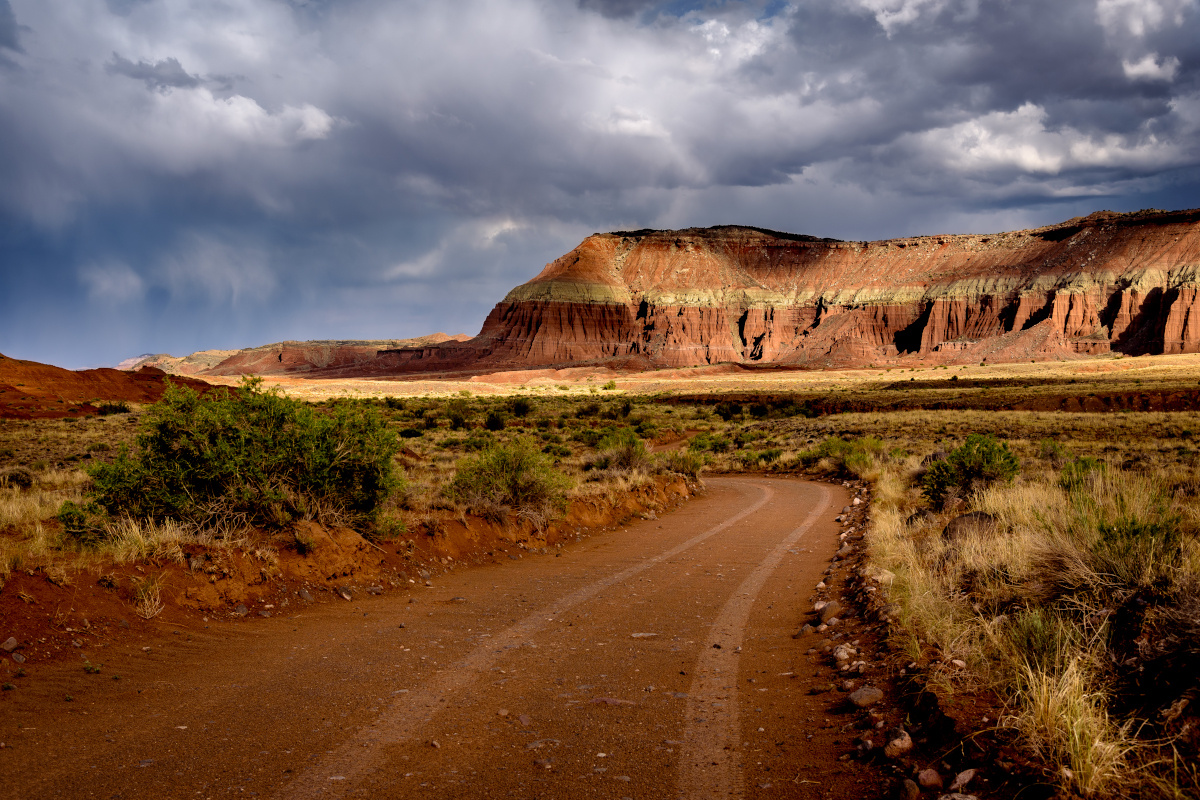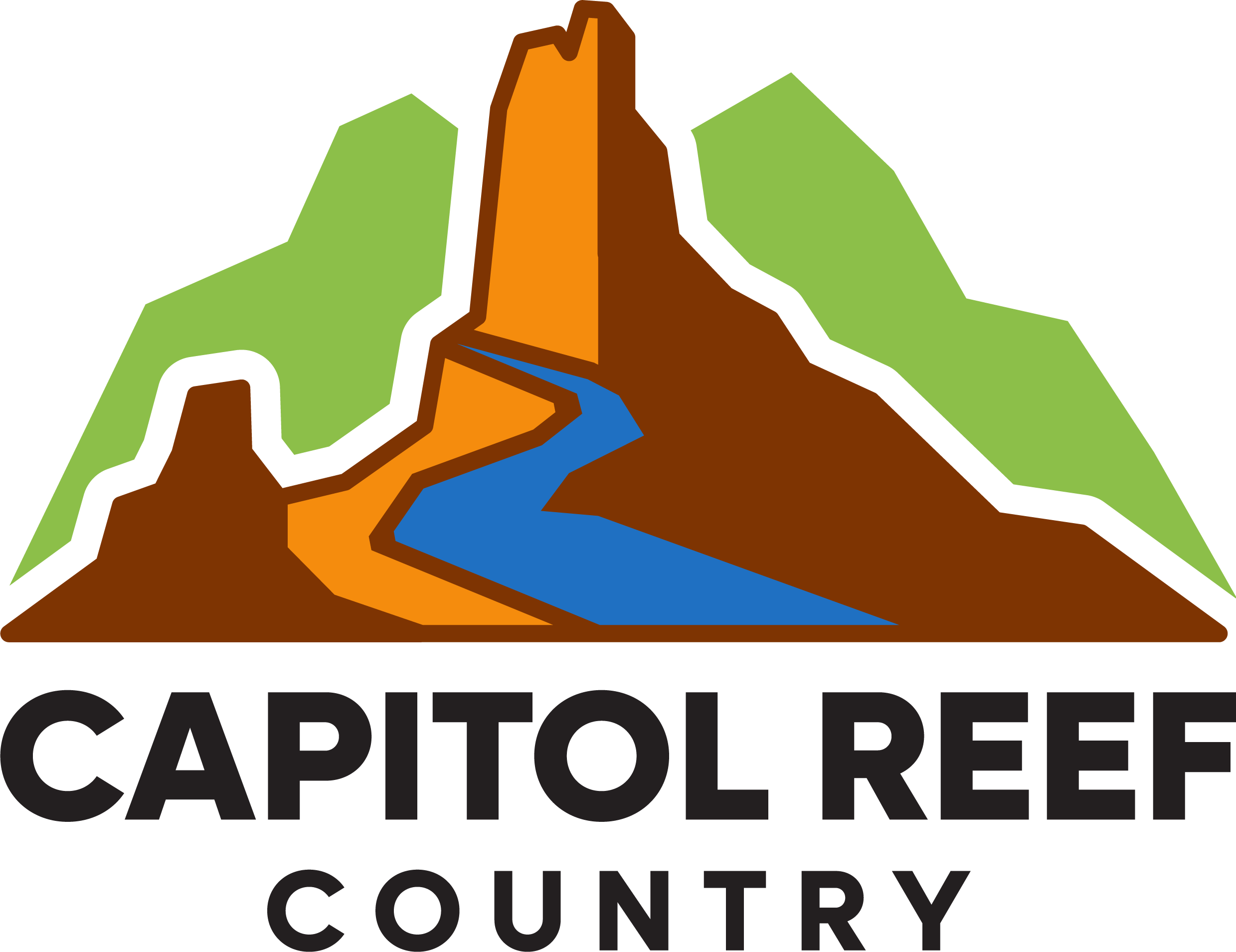
Cathedral Valley is a remote district at the northern end of Capitol Reef National Park. This scenic backcountry gem is dominated by southern Utah’s iconic soaring sandstone monoliths scattered throughout the vast high desert. Cathedral Valley is a must-see for photographers and backcountry adventurists.
Most visitors tour the 70-mile scenic Cathedral Valley Loop, which requires a high-clearance, four-wheel drive vehicle. About 12 miles east of the visitor center on Highway 24, the Cathedral Valley Loop crosses the Fremont River ford, following Hartnet Road to Cathedral Road/Caineveille Wash Road, and then looping back to Highway 24 about 18.6 miles east of the visitor center. This 58-mile dirt road portion of the Cathedral Valley Loop leads to massive monoliths such as the Walls of Jericho and panoramic overlooks of the Upper and Lower Cathedral Valley.
Begin with an eery look into the cowboy past at the Morrell Cabin, located two miles north of the Hartnet Junction. The richly colored Bentonite Hills are the first major geologic sight on the Cathedral Valley Loop, about nine miles past the river ford. These colorful clay hills photograph beautifully in the early morning and evening. A rusted old truck embedded in the mud adds unexpected interested.
 The Cathedral Valley Loop continues through high desert landscape, accented with lots of sagebrush which makes the perfect hideout for small reptiles and mammals, until the turnoff for the South Desert, where Jailhouse Rock stands impressively.
The Cathedral Valley Loop continues through high desert landscape, accented with lots of sagebrush which makes the perfect hideout for small reptiles and mammals, until the turnoff for the South Desert, where Jailhouse Rock stands impressively.
The pullout for Lower Cathedral Valley is the first of three main overlooks you won’t want to miss along the Cathedral Valley Loop. Next is South Desert Overlook, and Upper Cathedral Valley Overlook which has grand panoramic view of the entire Upper Cathedral Valley landscape and the Waterpocket Fold. The trio of massive monoliths known as the Temples of the Sun, Moon, and Stars are the main attraction of Lower Cathedral Valley. Nearby Glass Mountain, a large gypsum crystal formation is another must-see, along with the Gypsum Sinkhole.
There is a primitive campground just past the Upper Valley Overlook. It’s free, and provides a great home base for multi-day adventures. There are no facilities in the Cathedral Valley backcountry, with the exception of pit toilets, fire rings, and picnic tables at the campground, so come well prepared with adequate supplies. It’s unlikely that you’ll cross paths with anyone else, so be sure to carry plenty of water, food, and emergency supplies such as extra gas, a spare tire, and a shovel. Dress in layers, as even the hottest daytime temperatures can dip significantly at night.
Cathedral Valley is open all year, but weather conditions will determine how accessible it is at any given time. The Fremont River ford is usually dry and rocky, sometimes silty, and accessible most of the year but excessive rain, snow, and run-off can leave this and other roads impassable. The Bentonite clay can become very slippery when wet. Check with the visitor center for current conditions before heading into Cathedral Valley district.
Learn more about Capitol Reef National Park here.
Keep Capitol Reef Country Forever Mighty
What is Forever Mighty? It’s practicing responsible travel while visiting Utah and Capitol Reef Country by following the principles of Tread Lightly and Leave No Trace.
Plan ahead and prepare, travel and camp on durable surfaces, dispose of waste properly, leave what you find, minimize campfire impacts, respect wildlife, be considerate of others, support local business and honor community, history and heritage. Help us keep Utah and Capitol Reef Country’s outdoor recreation areas beautiful, healthy, and accessible.
